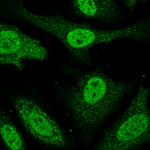This looks very interesting. Finally, a journal aiming to publishing scientific findings, not “stories” … Watch this space.
This looks very interesting. Finally, a journal aiming to publishing scientific findings, not “stories” … Watch this space.
We’ve recently seen evidence that some metabolites are not synthesized in the expected manner in HeLa cells. Creatine, a component of the energy-buffering phosphocreatine system, is one example. Creatine is thought to be synthesized from arginine, but when HeLa cells are labeled with arginine, creatine is still unlabeled, so this route cannot be active. Yet, the metabolite is clearly present.
Carnitine is another example: this metabolite is synthesized from trimethyl-lysine. We see nice labeling of the methyl groups in trimethyl-lysine in methionine-labeled cells (donated via SAM), but no label is found carnitine. So this pathway cannot be active either.
These metabolites are not in the RPMI-1640 medium, and the FBS used in these tracing experiments is dialyzed, so these metabolites should be endogenous. What’s going on?
 Our latest paper on the mitochondrial dehydrogenase MTHFD2, a cancer-associated enzyme, is now published in Scientific Reports. In this article by first author Nina Gustafsson-Sheppard (now with the Helleday lab at SciLife), we report that MTHFD2 is not only mitochondrial, but is present in the cell nucleus as well, and functions to drive cell proliferation by a mechanism independent of its enzymatic activity. This is important information for future studies aiming to target this protein pharmaceutically in cancer.
Our latest paper on the mitochondrial dehydrogenase MTHFD2, a cancer-associated enzyme, is now published in Scientific Reports. In this article by first author Nina Gustafsson-Sheppard (now with the Helleday lab at SciLife), we report that MTHFD2 is not only mitochondrial, but is present in the cell nucleus as well, and functions to drive cell proliferation by a mechanism independent of its enzymatic activity. This is important information for future studies aiming to target this protein pharmaceutically in cancer.